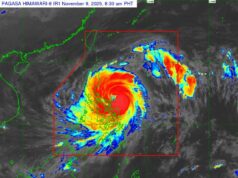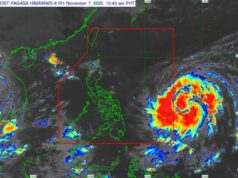Aftershocks continue a week after 6.3 earthquake; over 1,000 families still displaced

AFTERSHOCKS as strong as magnitude 4.3 continue to rock parts of Mindanao a week after the magnitude 6.3 earthquake on Oct. 16 with the epicenter around Tulunan, Cotabato, based on the monitoring of the Philippine Institute of Volcanology and Seismology (Phivolcs). A total of 1,343 families remain displaced, with 936 of them still staying at three evacuation centers, according to the Oct. 24 report of the National Disaster Risk Reduction and Management Council (NDRRMC). Seven people died while 215 others were injured in last week’s main tremor. While assessments continue, NDRRMC said the number of totally damaged infrastructure is so far 1,312, most of these houses at 1,288 while the others are: 10 schools, two health facilities, four churches, two commercial establishments, and six other public structures. Partially damaged structures are counted at 5,655.
GENSAN
In General Santos (GenSan) City, a state of calamity was declared Tuesday to allow the local government to access funds for assistance to more than 1,300 workers affected by the fire at the Gaisano Mall of GenSan. It took firefighters more than 24 hours to put out the blaze, which broke out just after the 6.3 earthquake. The cause of the fire is still being validated, according to NDRRMC. In a statement, the GenSan government said it will also provide almost P500,000 in financial aid to 91 family-dependents who were affected by a separate fire incident in Calumpang. Three other towns — Makilala in Cotabato, and Matanao and Bansalan in Davao del Sur — have earlier declared a state of calamity.
KOREAN AID
Meanwhile, the Korean Embassy in Manila announced on Wednesday that it is donating $100,000 for the relief and recovery operations. Ambassador Han Dong-man made the commitment during a meeting with Senator Richard Gordon, chairman of the Philippine Red Cross. “We hope that this donation will further contribute to the strengthening of the friendship between Korea and the Philippines especially as 2019 is the 70th anniversary of Korea-Philippines bilateral relations,” Mr. Han said.
BUILDING CODE
In Davao City, the Department of Science and Technology-Region 11 (DoST-11) called for a review and revision of the building code in view of “new findings” following last week’s earthquake. “Adjust the building code according to the new findings. Kasi kung mas malakas ang intensity ng earthquakes (If the earthquake intensities get stronger) in the future, dapat ready tayo nito (we have to be ready) and our buildings should be compliant with those earthquakes,” DoST-11 Regional Director Anthony C. Sales told media in Wednesday’s Habi at Kape forum. He noted that their regional office based in the city had some cracks from the earthquake. “We are now requesting for additional funds for the repair and strengthen the foundation of our building,” he said. Mr. Sales also urged local governments and the public to study the Metro Davao Earthquake Models (MDEM), which maps active faults. “We are informing everyone to study the MDEM because that will tell you exactly where possible earthquakes will happen and you can anticipate the impact of this earthquake,” he said. The MDEM Atlas was launched last Sept. 4 by DoST-Phivolcs. “The new faults found in the recent earthquake, if these are big faults, it will definitely affect the model that we developed for Davao Region,” Mr. Sales said. — Maya M. Padillo



